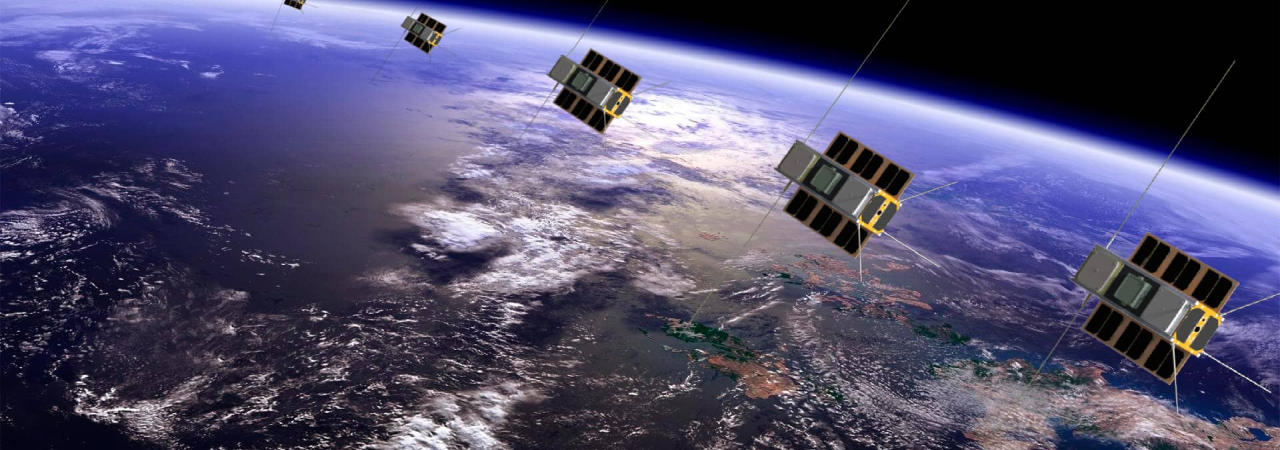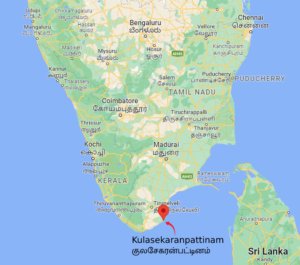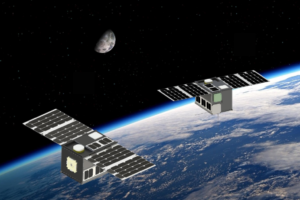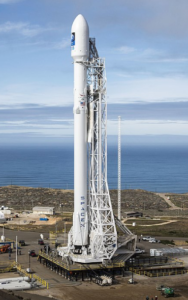
- September 1, 2022
- TGTD
- 0
Global Space Business Bulletin
Unleashing new opportunities for the Space Industry Supply Chain

In a land area spread over 2,000 acres, a new spaceport is coming up at Kulasekarapattinam in Thoothukudi district in Tamil Nadu. A spaceport at Kulasekarapattinam will provide a strategic advantage to ISRO as small satellites launched from this place can fly a circuitous path to avoid the land mass of Sri Lanka, which is currently the case for launches from Sriharikota. The new launchpad will help ISRO save fuel and have a dedicated space for launching Small Satellite Launch Vehicles (SSLV).
“It will take two years to set up the facility, which will have a new launchpad, radar, ground stations, tracking systems and safety systems, among others.”
– ISRO Chairman S Somanath
The new spaceport will be used to primarily launch small satellites that weigh less than 500 kilos. Smaller rockets are easier to build, assemble, and launch with less time in comparison to their larger counterparts. Further as the demands for utility and hence the demand for small satellites are expected to be much larger than that of the currently used large ones, it is important for India to have a dedicated spaceport for such smaller rockets. Smaller rockets are also attractive to foreign and domestic customers who are looking to launch small satellites at low costs.
The growing demand for small satellites
 The small satellite market revenue totalled ~US$ 3.05 Bn in 2020, according to Future Market Insights (FMI), and is expected to reach ~US$ 12.9 Bn by 2031. Small satellite deployments will continue to accelerate due to the development of satellite communication and automation technologies. This is driven by factors such as increasing small satellite missions, need for earth observation and remote sensing, uninterrupted satellite communication, and developments in Global Navigation Satellite System (GNSS).
The small satellite market revenue totalled ~US$ 3.05 Bn in 2020, according to Future Market Insights (FMI), and is expected to reach ~US$ 12.9 Bn by 2031. Small satellite deployments will continue to accelerate due to the development of satellite communication and automation technologies. This is driven by factors such as increasing small satellite missions, need for earth observation and remote sensing, uninterrupted satellite communication, and developments in Global Navigation Satellite System (GNSS).
Small satellites find numerous applications in the field of weather forecast, satellite communication, defence, space research, GPS.
How is Rising Demand for Earth Observation Imagery and Analytics Affecting Small Satellite Market?
Earth observation services cover the detection of climatic changes, monitoring of agricultural fields, meteorology and disaster mitigation. There is an increase in the requirement of high-resolution earth imaging across many verticals, as these images can be used for various purposes like precise management of water, land and forest resources.
The Unites States government is topping the list for being the largest purchaser of satellite imagery. This is one of the reasons, most small satellite companies are seeing the US government as a stable long-term customer.
Small satellite market like many others also witnessed challenges including disruptions in supply chain of raw materials and logistical challenges. While sales dampened temporarily, manufacturers took up research and development activities to offset decreasing sales.
However, an increase in development of ride-sharing systems and specialized satellite-launch solutions by market players like SpaceX, Blue Origin and Virgin Galactic in 2021 is expected to revive the growth of the smaller satellite industry.
Space Industry Supply Chain - Space Technology, Test & Measurement, Space Situational Awareness, Electronics Mechanical, Materials, Artificial Intelligence, Aircraft manufacturing, MRO, Space Vehicle, C4ISR and related services, Modeling and Simulation
 A launch pad is a platform from which a rocket is launched, and they’re found at facilities called launch complexes or spaceports.
A launch pad is a platform from which a rocket is launched, and they’re found at facilities called launch complexes or spaceports.
A typical launch pad consists of a pad and a launch mount, a metal structure that supports the upright rocket before it launches. Umbilical cables from the launch mount provide the rocket with power, cooling liquids, and top-up propellant before launch. The structure also helps shield the rocket from lightning strikes.
Different launch complexes have different ways of putting rockets on launch pads. Launch pads also have features that minimize damage from the rocket’s launch. When a rocket first ignites, valves lining the launch pad spray hundreds of thousands of gallons of water into the air around the exhaust, which helps lessen the rocket’s deafening roar. Trenches beneath the launch pad also direct the rocket’s exhaust out and away from the craft, so the flames can’t rise back up and engulf the rocket itself.

